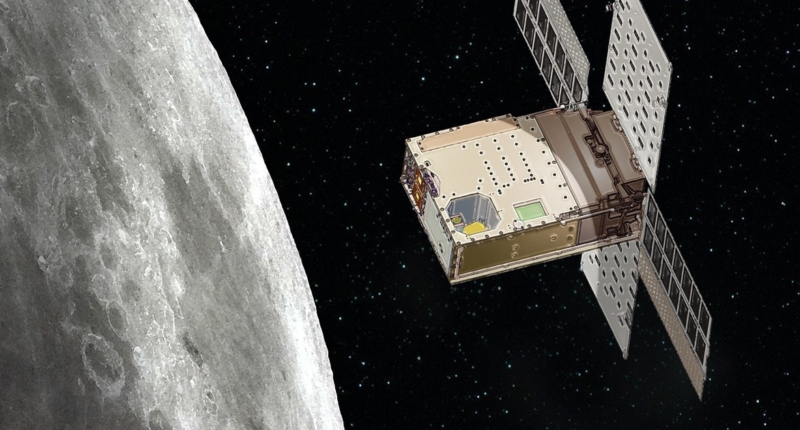NASA’s Lunar Flashlight mission launched in December 2022 to detect surface water ice at the Moon’s South Pole. However, three of the four thrusters underperformed, forcing the team to use a modified maneuvering technique. Unfortunately, the only operational thruster also experienced a rapid loss in performance. The spacecraft’s operations team is working on restoring the partial operation of one or more thrusters before the end of April. Lunar Flashlight’s miniaturized propulsion system is a technology demonstration using a new type of green propellant, and it has completed all of its technology objectives. The spacecraft will use an energy-efficient near-rectilinear halo orbit (NRHO) to detect water ice on the Moon’s South Pole.
NASA Troubleshoots Lunar Flashlight’s Propulsion System Bound for the Moon
NASA’s Lunar Flashlight mission launched in December 2022 with the aim of detecting surface water ice at the Moon’s South Pole. However, three of the four thrusters began underperforming shortly after the launch, forcing the team to use a modified maneuvering technique that utilized the one fully-functioning thruster. Unfortunately, the only operational thruster also experienced a rapid loss in performance.
The spacecraft’s operations team continues to work on restoring the partial operation of one or more thrusters to keep Lunar Flashlight in an orbit that would allow monthly flybys of the lunar South Pole. While they have had some success, new techniques are being tested to clear suspected obstructions in the thruster fuel lines before the end of April.
Lunar Flashlight’s miniaturized propulsion system is a technology demonstration that has never been used in space before. The spacecraft uses a new type of green propellant that is low-toxic, as opposed to the commonly used monopropellant hydrazine.
The mission has completed all of its technology objectives, and other systems on Lunar Flashlight are functioning well, according to a statement from NASA. “Though we hoped the propulsion system would perform perfectly, encountering and responding to these issues is an expected part of a technology demonstration mission like this,” said Justin Treptow, the deputy program executive for NASA’s Small Spacecraft Technology program.
To achieve its goal of detecting water ice on the Moon’s South Pole, Lunar Flashlight will employ an energy-efficient near-rectilinear halo orbit (NRHO) that will bring the briefcase-size SmallSat within 9 miles (15 kilometers) of the lunar surface.
Don’t miss interesting posts on Famousbio
